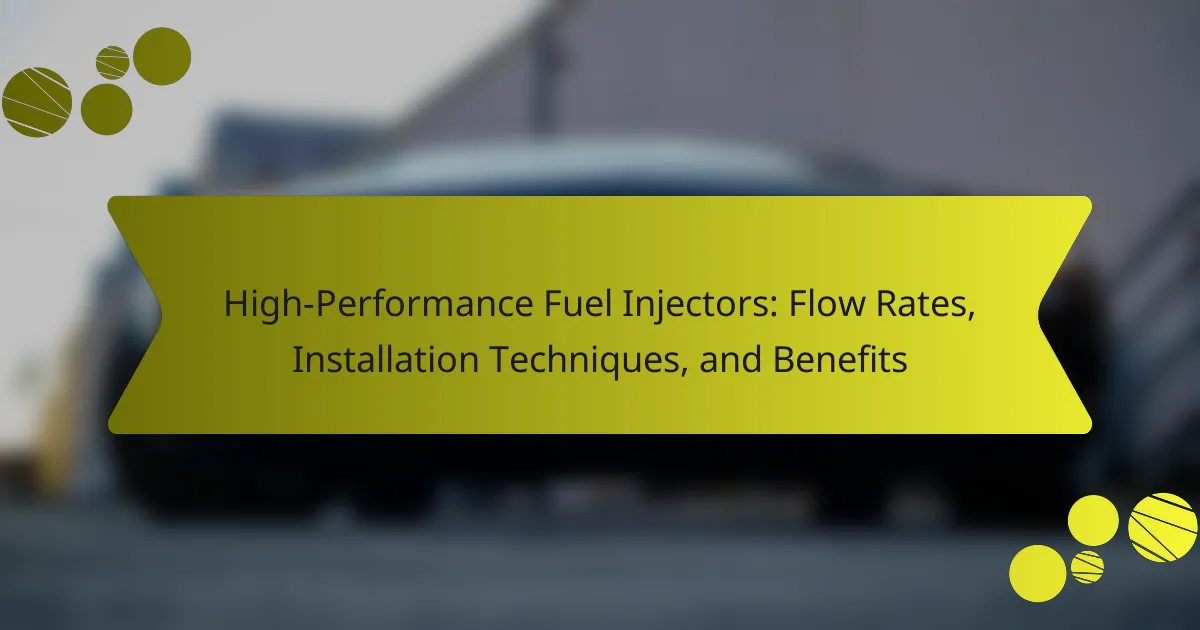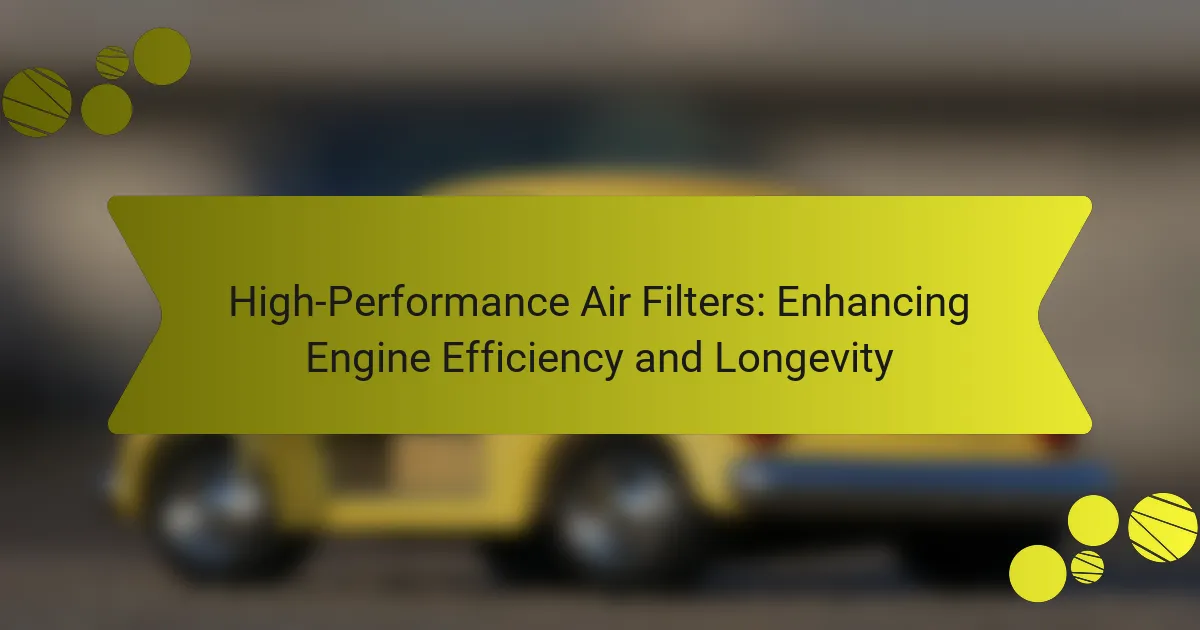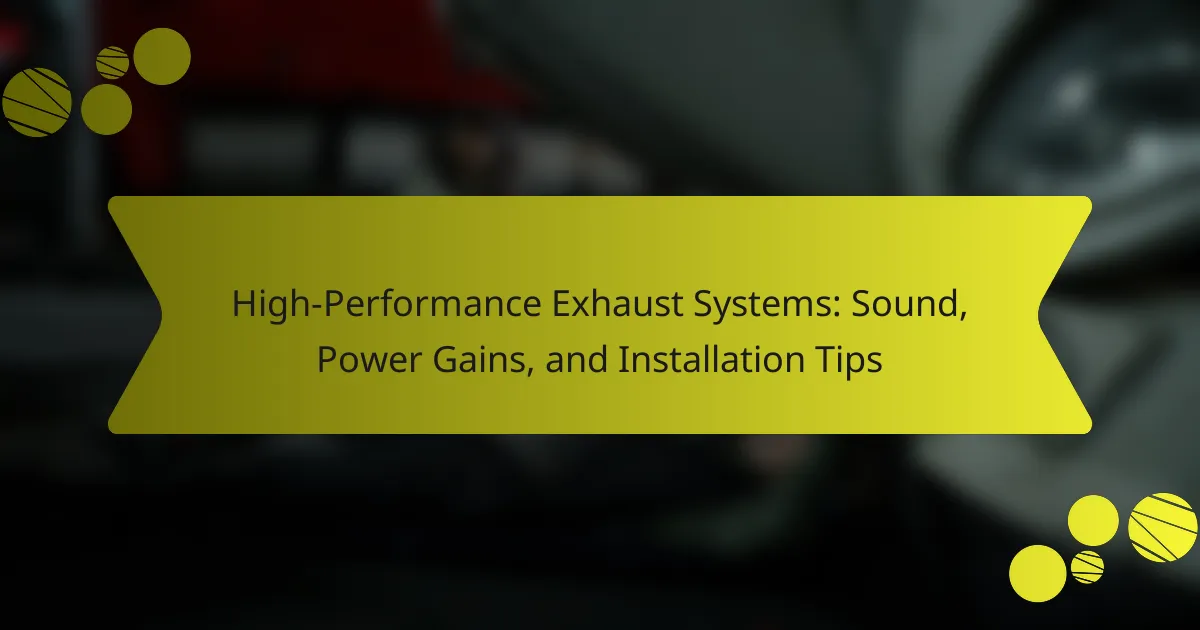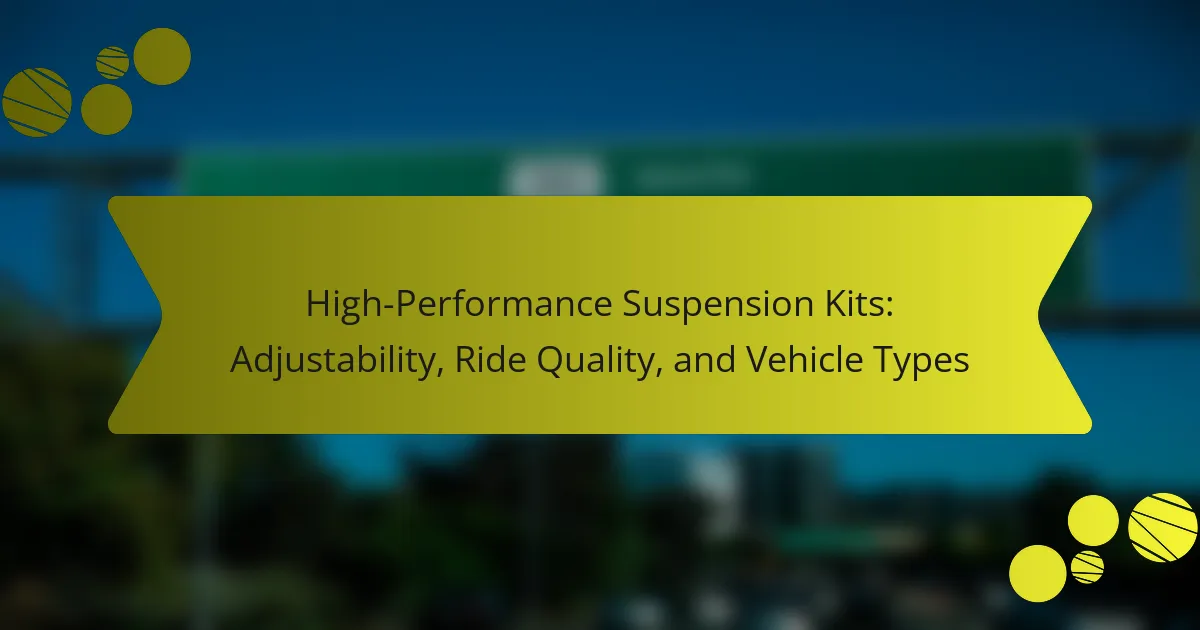High-performance fuel injectors enhance engine efficiency and power output. This article covers flow rates and their impact on performance, essential installation techniques for optimal operation, and the unique benefits these injectors provide for high-demand applications. Regular maintenance practices will also be discussed to ensure longevity and functionality.
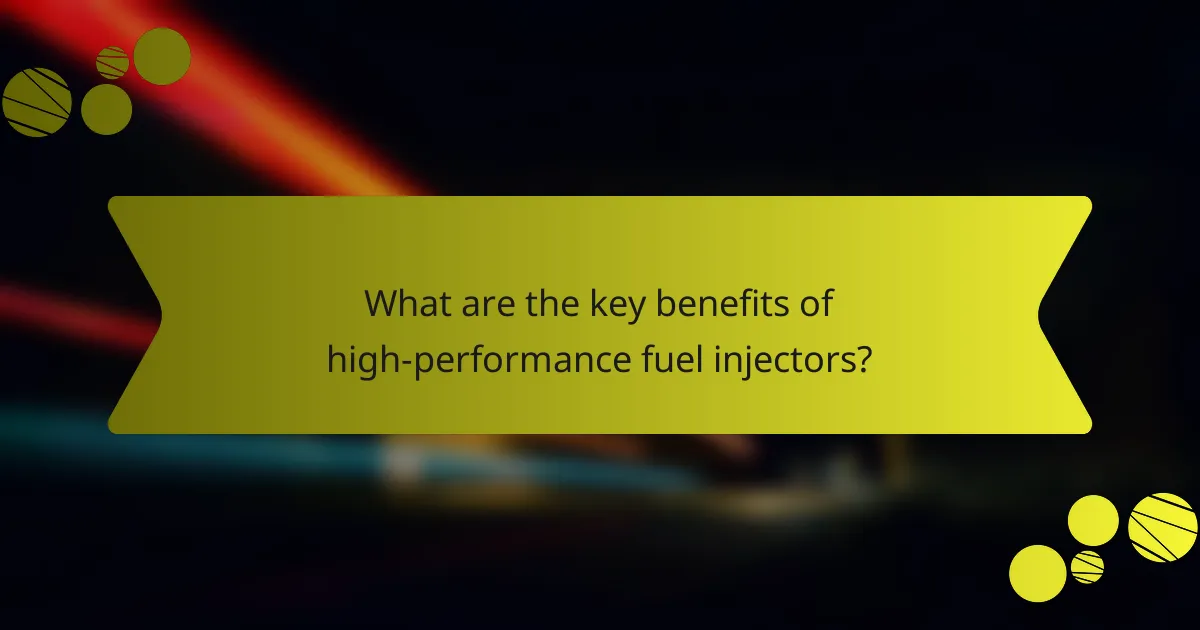
What are the key benefits of high-performance fuel injectors?
High-performance fuel injectors significantly enhance engine efficiency and power output. They provide improved fuel atomization, leading to better combustion and increased horsepower. Additionally, these injectors often feature higher flow rates, allowing for more fuel delivery, which is essential for high-performance applications. Their precise control enhances throttle response and overall vehicle performance.
How do high-performance fuel injectors improve engine efficiency?
High-performance fuel injectors significantly enhance engine efficiency by optimizing fuel delivery. They achieve precise fuel atomization, which improves combustion efficiency and power output. Additionally, their higher flow rates can accommodate increased air intake, leading to better overall performance. Improved fuel mapping and installation techniques further contribute to maximizing engine efficiency.
Which performance gains can be expected with upgraded fuel injectors?
Upgraded fuel injectors can significantly enhance engine performance by increasing fuel flow rates and improving combustion efficiency. This leads to better throttle response, higher horsepower, and improved fuel economy. Enhanced atomization from high-performance injectors also contributes to cleaner emissions.
Why is fuel atomization important for engine performance?
Fuel atomization is crucial for engine performance as it enhances combustion efficiency. Proper atomization ensures a fine mist of fuel mixes well with air, resulting in more complete combustion. This leads to increased power output, improved fuel economy, and reduced emissions. High-performance fuel injectors optimize this process by delivering precise flow rates, which directly impact atomization quality. Enhanced atomization can lead to improved throttle response and overall engine responsiveness, making it a key factor in high-performance applications.
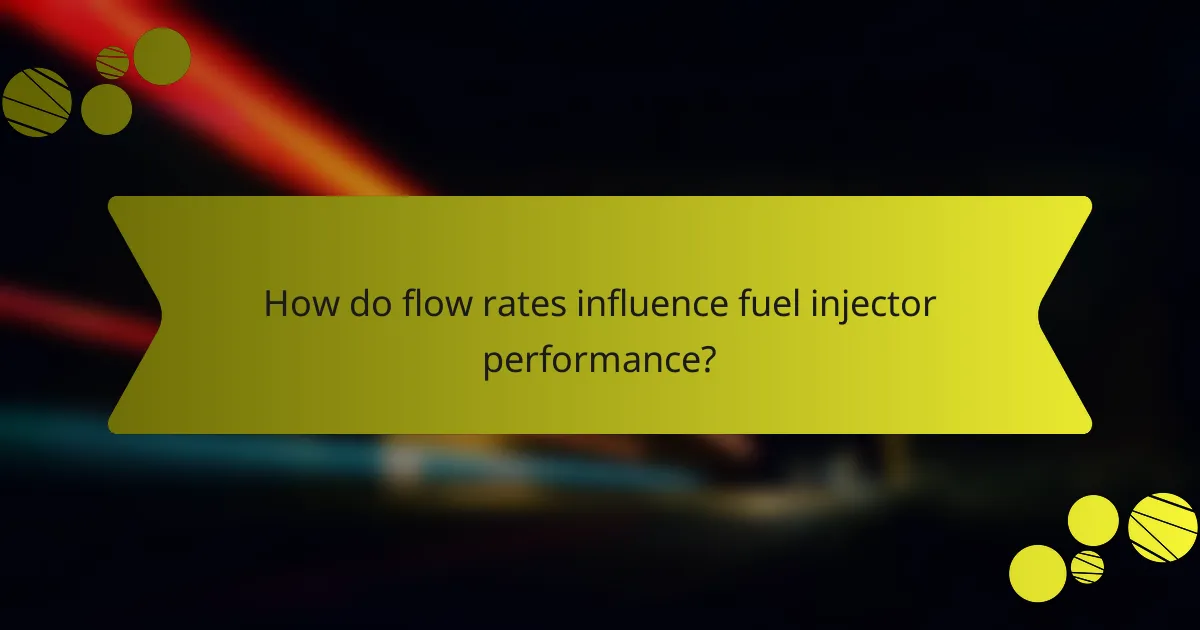
How do flow rates influence fuel injector performance?
Flow rates significantly impact fuel injector performance, affecting engine efficiency and power output. Higher flow rates allow for more fuel delivery, enhancing performance in high-demand situations. Proper calibration ensures optimal combustion, leading to improved throttle response and acceleration. Conversely, excessively high flow rates can cause fuel flooding, resulting in poor engine performance and increased emissions. Thus, selecting the right flow rate is crucial for achieving the desired balance between power and efficiency in high-performance fuel injectors.
What are the standard flow rate measurements for high-performance fuel injectors?
Standard flow rate measurements for high-performance fuel injectors typically range from 300 to 1,200 cc/min. These rates ensure optimal fuel delivery for enhanced engine performance. Factors such as injector design and application influence specific flow rates. For example, racing injectors may exceed 1,000 cc/min to support high horsepower demands.
How to choose the right flow rate for specific engine setups?
To choose the right flow rate for specific engine setups, consider the engine’s horsepower, fuel type, and intended use. High-performance fuel injectors should match the engine’s needs to optimize performance and efficiency.
1. Assess horsepower requirements: Calculate the fuel flow needed based on the engine’s horsepower and air-fuel ratio.
2. Determine fuel type: Different fuels require different flow rates; for example, ethanol may need higher flow rates than gasoline.
3. Evaluate intended use: Racing applications may require higher flow rates compared to street performance setups.
4. Match injector specifications: Select injectors with flow rates that align with your calculations and performance goals.
By following these steps, you ensure the fuel injectors provide adequate fuel delivery for optimal engine performance.
What role do flow rates play in tuning and modifications?
Flow rates are crucial in tuning high-performance fuel injectors as they determine the volume of fuel delivered to the engine. Properly matched flow rates enhance engine efficiency, power output, and throttle response. Adjustments to flow rates can optimize combustion and fuel economy, making them a key factor in performance modifications. High-flow injectors, for example, can support increased horsepower by ensuring adequate fuel supply at higher RPMs.
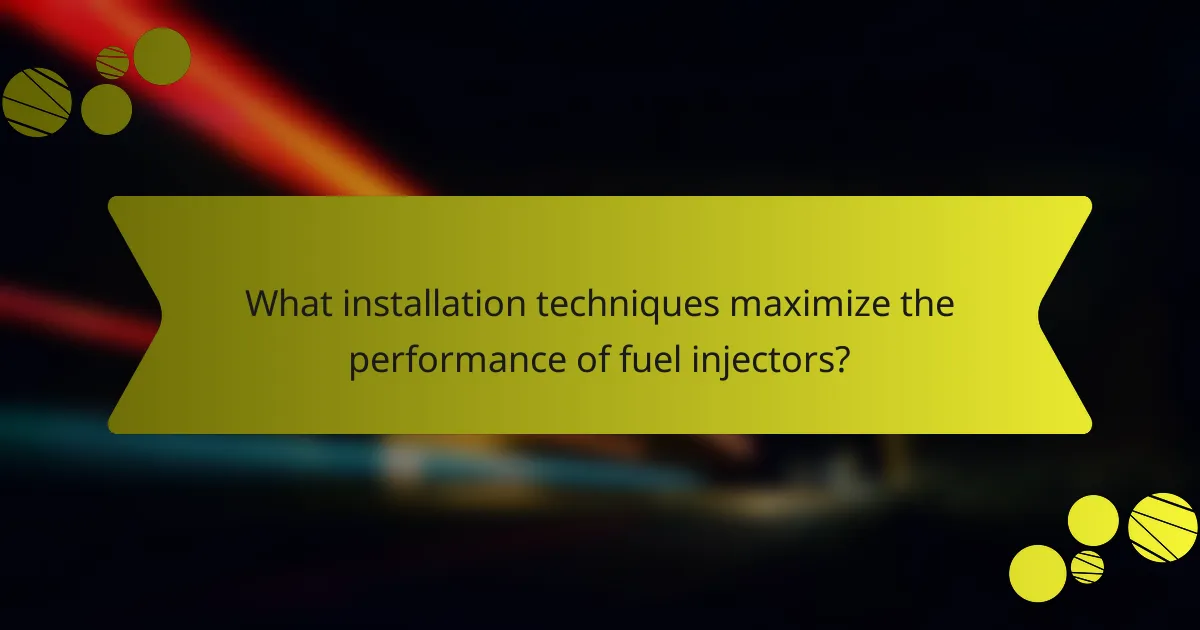
What installation techniques maximize the performance of fuel injectors?
Proper installation techniques can significantly enhance the performance of high-performance fuel injectors. Key methods include ensuring precise alignment, using appropriate sealing materials, and maintaining optimal fuel pressure.
1. Align injectors accurately to avoid leaks and ensure efficient fuel atomization.
2. Utilize high-quality O-rings and seals to prevent fuel leakage and maintain pressure.
3. Ensure the fuel system is clean to prevent contaminants from obstructing injector operation.
4. Adjust fuel pressure regulators to match injector specifications for optimal flow rates.
Implementing these techniques maximizes injector efficiency and engine performance.
What tools are essential for installing high-performance fuel injectors?
Essential tools for installing high-performance fuel injectors include a torque wrench, fuel injector puller, O-ring lubricant, and a socket set. These tools ensure precise installation and optimal performance. A torque wrench allows for accurate tightening to manufacturer specifications, preventing damage. A fuel injector puller aids in the removal of old injectors without harm. O-ring lubricant ensures a proper seal, preventing leaks. A socket set provides the necessary fittings for various engine configurations.
How to ensure proper alignment and sealing during installation?
To ensure proper alignment and sealing during installation, follow these key steps. First, clean the injector ports thoroughly to remove debris. Next, check the O-rings for damage; replace if necessary. Align the fuel injectors carefully with the intake manifold. Tighten the mounting bolts to the manufacturer’s specifications to secure the injectors without over-tightening. Finally, conduct a pressure test to confirm there are no leaks. This process enhances the performance of high-performance fuel injectors, ensuring optimal flow rates and efficiency.
What common mistakes should be avoided during installation?
To avoid common mistakes during the installation of high-performance fuel injectors, ensure proper alignment and secure connections. Incorrect positioning can lead to fuel leaks or poor performance. Additionally, neglecting to clean the injector ports can cause debris to interfere with flow rates. Always follow manufacturer specifications for torque settings to prevent damage. Lastly, failing to test the system post-installation can result in undetected issues affecting engine performance.
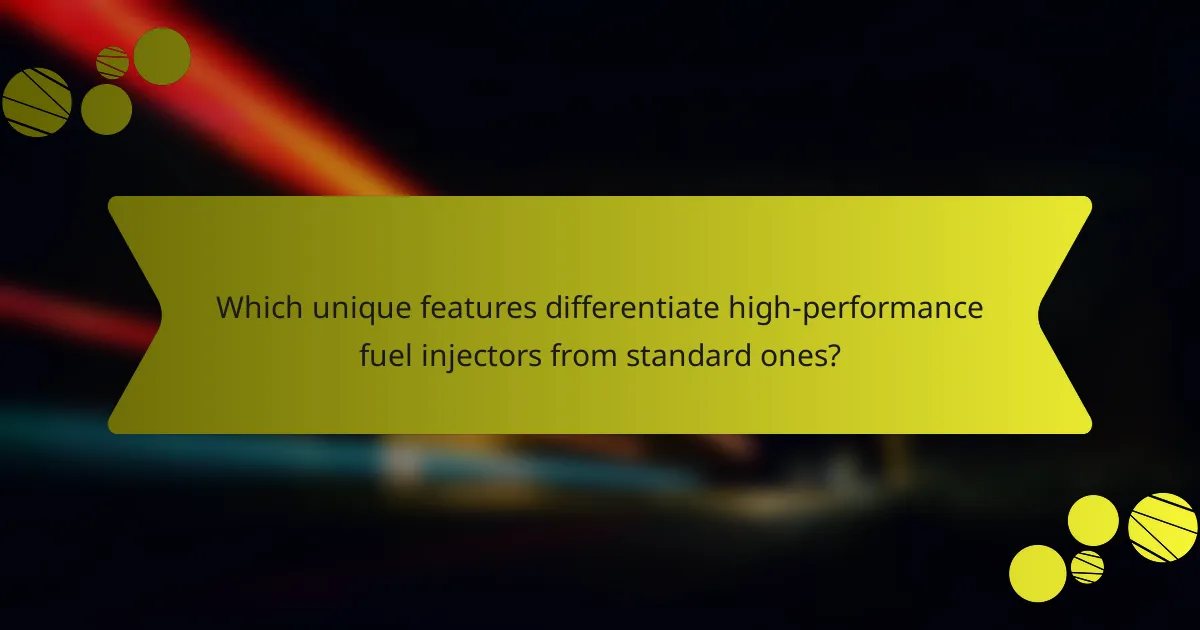
Which unique features differentiate high-performance fuel injectors from standard ones?
High-performance fuel injectors feature superior flow rates, advanced materials, and precision engineering compared to standard ones. These injectors typically have larger nozzle sizes, enabling increased fuel delivery and better atomization. Enhanced fuel atomization leads to improved combustion efficiency and power output. Unique attributes such as adjustable spray patterns and compatibility with high-octane fuels further distinguish them. As a result, high-performance injectors offer significant benefits in terms of engine responsiveness and overall performance.
What materials are commonly used in high-performance fuel injectors?
High-performance fuel injectors commonly use materials like stainless steel, aluminum, and high-temperature plastics. These materials enhance durability, corrosion resistance, and thermal stability, ensuring optimal performance under extreme conditions.
How does the design of high-performance fuel injectors impact their functionality?
The design of high-performance fuel injectors significantly enhances their functionality by optimizing flow rates and atomization. Key design features include nozzle shape, size, and spray pattern, which directly affect fuel delivery efficiency. For instance, a multi-hole nozzle can provide better atomization, leading to improved combustion and power output. Additionally, precise installation techniques ensure optimal alignment, reducing the risk of fuel pooling and enhancing engine performance. These attributes collectively contribute to the overall effectiveness of high-performance fuel injectors in maximizing engine efficiency.
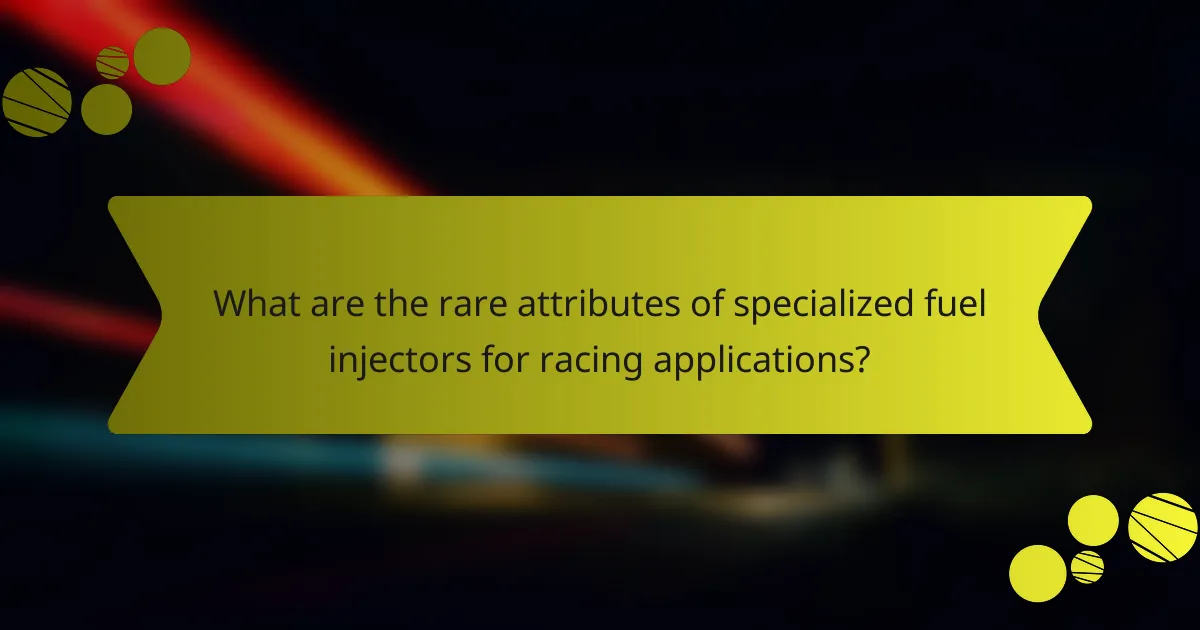
What are the rare attributes of specialized fuel injectors for racing applications?
Specialized fuel injectors for racing applications possess rare attributes that enhance performance. These include ultra-fast response times, precise atomization for optimal combustion, and the ability to operate at extreme pressures. Additionally, some injectors feature custom nozzle designs tailored for specific engine configurations, improving fuel delivery efficiency.
How do racing fuel injectors differ in construction and performance?
Racing fuel injectors differ in construction and performance primarily through their flow rates and design features. High-performance fuel injectors typically have larger diameters and advanced nozzle designs, allowing for increased fuel delivery. This results in optimized combustion and improved engine efficiency. Additionally, racing injectors often utilize materials that withstand higher temperatures and pressures, enhancing durability during intense racing conditions.
What specific tuning considerations are necessary for racing fuel injectors?
Specific tuning considerations for racing fuel injectors include flow rate matching, pressure settings, and pulse width adjustments. Properly matching the injector flow rates to the engine’s needs ensures optimal performance. Adjusting fuel pressure can enhance atomization, while fine-tuning pulse width maximizes fuel delivery efficiency. These adjustments are crucial for achieving peak horsepower and throttle response in high-performance applications.
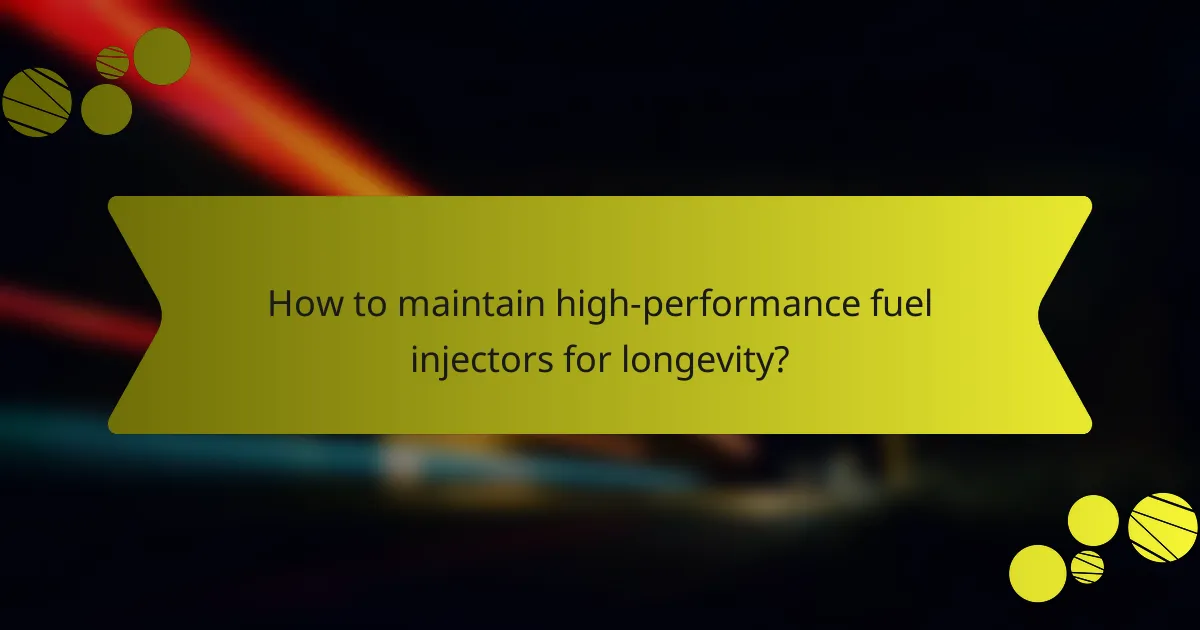
How to maintain high-performance fuel injectors for longevity?
To maintain high-performance fuel injectors for longevity, regular cleaning, proper installation, and using high-quality fuel are essential. Cleaning helps prevent clogging, which can impair performance. Correct installation techniques ensure optimal flow rates and prevent leaks. Additionally, using fuel with the right octane rating minimizes deposits and enhances injector lifespan. Regular maintenance checks can identify issues early, preserving injector functionality.
What cleaning methods are recommended for optimal performance?
For optimal performance, recommended cleaning methods for high-performance fuel injectors include ultrasonic cleaning, chemical cleaning solutions, and pressurized fuel injector cleaning. Ultrasonic cleaning effectively removes carbon deposits and contaminants, enhancing flow rates. Chemical solutions can dissolve stubborn residues, while pressurized cleaning helps clear blockages and improve injector spray patterns. Regular maintenance using these methods can significantly extend injector lifespan and efficiency.
How often should fuel injectors be serviced or replaced?
Fuel injectors should be serviced every 30,000 to 50,000 miles, depending on vehicle use and fuel quality. Regular maintenance ensures optimal performance and longevity. High-performance fuel injectors may require more frequent checks due to increased demands. Signs of wear include poor fuel economy and engine misfires.
What are the signs of failing fuel injectors and how to address them?
Signs of failing fuel injectors include poor engine performance, rough idling, and increased fuel consumption. To address these issues, inspect for clogs, perform cleaning, or consider replacement. High-performance fuel injectors enhance flow rates, improve throttle response, and boost overall engine efficiency. Regular maintenance ensures optimal performance and longevity.
What best practices can enhance the lifespan of high-performance fuel injectors?
To enhance the lifespan of high-performance fuel injectors, regular maintenance, proper installation, and quality fuel are essential. Regular cleaning prevents clogging, while correct installation ensures optimal performance. Using high-quality fuel reduces deposits and wear.
1. Perform regular cleaning to prevent carbon buildup.
2. Ensure proper installation to avoid misalignment.
3. Use high-quality fuel to minimize deposits.
4. Monitor fuel pressure to prevent injector stress.
5. Avoid prolonged idle time to reduce wear.
